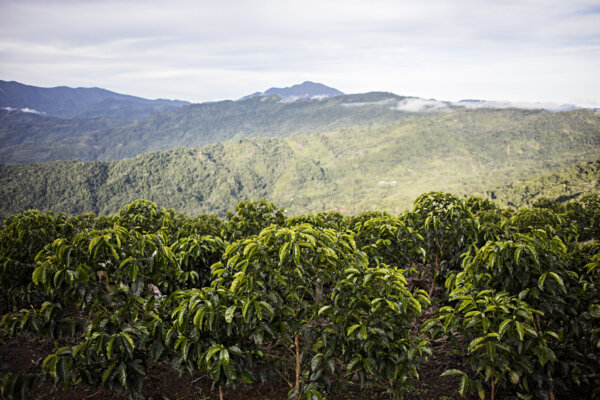After a highly successful exploratory venture last year, we are back in Bolivia. This year’s slate features clean, eloquent washed lots and stellar anaerobic natural chops including varietal-separated Java, Catuai, Caturra, and Typica from Taypiplaya, Illimani, and Copacabana in Caranavi region.The lots with Rosita in the name come from the farm of the family coordinating cherry buying between these different subregions—not just providing superb coffee of their own but also fostering beneficial competition in the local market.
We’re immensely excited to be bringing in more volume this year after 2023’s limited offerings arrived on time and in prime condition.
Utilizing the proximity we have through our Peru lab, we personally oversaw 2024’s offerings at the mill (our standard protocol in Peru and Mexico). That meant ensuring traceability and quality by being actively present—pulling samples, green grading, and cupping them every 15-20 minutes as well as tracking lots from the moment they entered the mill until they were loaded onto containers for export, after which we’ll track them carefully through arrival.
As in Peru this year, harvest is early with the greater Caranavi zone in peak season. This year’s harvest is bigger than average, but it’s still tiny when compared to Peru. Early estimates projected a grand total of 35,000 bags in 2024 (in contrast to Peru’s 4,000,000 bags). As we said last year: in Bolivia, all gems are rare gems.
Aside from its rarity, another thing that makes Bolivia coffee particularly special is that producers there grow a slate of varieties that includes Java and Geisha as well as classic Caturra and Typica. They process not just exquisite washed coffee but also distinct and articulate anaerobic naturals—ones that are exciting and distinctly fruited, but with cleanliness and well-integrated terroir.

We’ve always known the quality potential here is through the roof, with Caranavi just across the border from Putina Punco in Puno—a region that produces some of the most spectacular coffees in all of Peru. Like those in Bolivia, they’re rare, incredibly coveted, and immensely difficult to source. Both regions are over a mile high and feature similar but unique microclimates with hot summer days and long, cool nights.
We’ve been working from the beginning to bring in premium Bolivia coffee, but this is the first time the pieces are all in place.
We had some exploratory ventures in our first years, but at the time the market was cornered by one buying group. We struggled to find the quality we needed. Back then, buying from Bolivia meant paying high prices for coffee that wasn’t representative of the profiles that make Bolivia so special.
In 2023, we met a family of farmers who was not only growing delicious coffee, but also setting up cherry-buying stations to create a competitive marketplace for growers in the surrounding regions of Illimani, Copacabana, and Taypiplaya, among others. Creating competitive markets where producers have varied options to sell their coffee is one of our top priorities, so we knew we wanted to be a part of growing this venture.
Creating more competition and opportunity for indigenous smallholder producers in the area is at the center of our vision here, and the quality and rarity of these coffees—how singular they are—makes the work that much more rewarding.
| Interested in sourcing coffee with us? Reach out at info@redfoxcoffeemerchants.com. To learn more about our work, check out our journal and follow us on Instagram @redfoxcoffeemerchants . |
